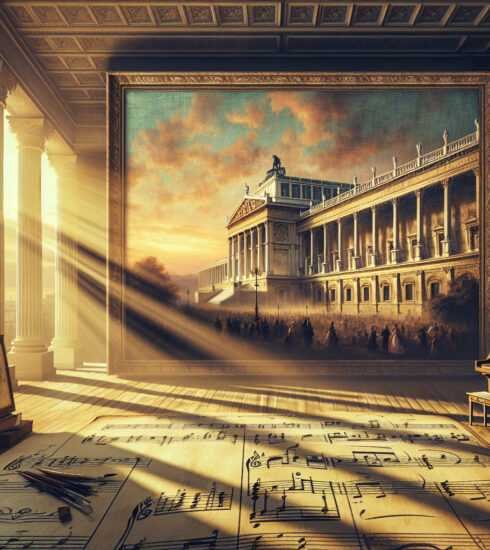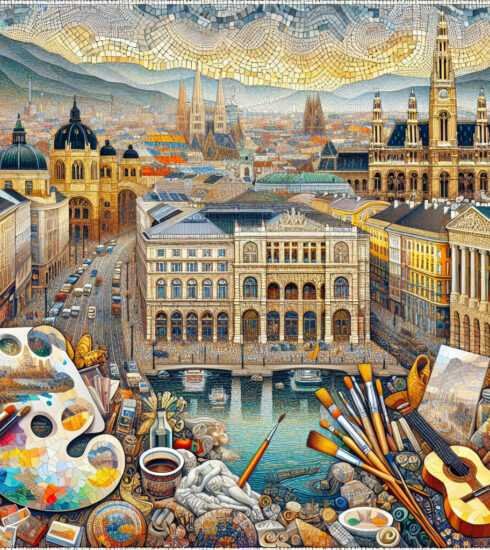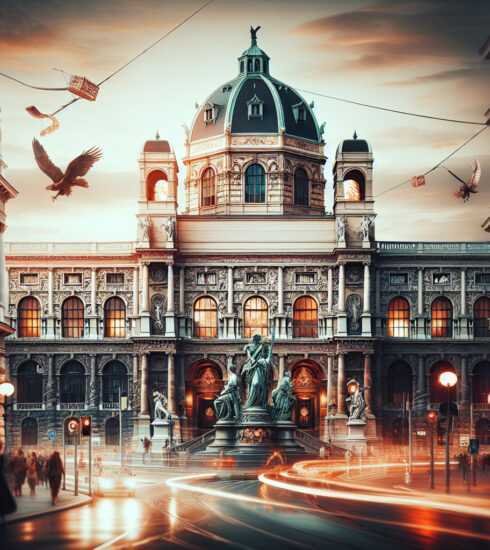From the Streets to the Galleries: Unveiling Viennas Artistic Evolution
Introduction
Vienna, the capital city of Austria, has a vibrant and thriving art scene that spans centuries. From the magnificent works of classical artists like Gustav Klimt and Egon Schiele to the experimental and contemporary pieces by emerging artists, Vienna’s art scene continually evolves and attracts art enthusiasts from all over the world. In recent years, a significant shift has been observed in the city’s artistic landscape, with street art gaining recognition and finding its place within galleries and museums. This article will trace Vienna’s artistic evolution, from its classical roots to its contemporary expressions, highlighting the role of street art in shaping the city’s art scene.
The Classical Era: Vienna’s Artistic Legacy

During the late 18th and early 19th centuries, Vienna was the epicenter of artistic excellence and innovation. This period, known as the Classical Era, saw the rise of renowned artists such as Gustav Klimt, Egon Schiele, and Oskar Kokoschka, who left an indelible mark on Vienna’s art scene. These artists embraced the Art Nouveau movement, characterized by its decorative and ornamental style. Their works, often portraying sensuality and eroticism, challenged societal norms and established Vienna as a hub of creativity and cultural significance.
Vienna Secession: Birth of a Modern Movement
The late 19th century saw a rebellion against the conservative art establishment in Vienna, which led to the formation of the Vienna Secession in 1897. Led by Gustav Klimt and a group of young artists, the Vienna Secession aimed to break away from traditional academic styles and embrace newer, more experimental forms of art. The movement embraced Symbolism, Art Nouveau, and modernist influences, and sought to create a distinct Viennese style known as “Wiener Jugendstil.” The Vienna Secession also played a crucial role in promoting a broader understanding and appreciation of art in Vienna, organizing exhibitions and fostering dialogue among artists and the public.
The Vienna Secession played a significant role in Vienna’s artistic evolution, challenging the established norms and introducing new artistic styles. Gustav Klimt, Egon Schiele, and other members of the Vienna Secession created works that were daring and provocative, often exploring themes of sexuality and identity.The Birth of Street Art: Vienna’s Alternative Culture

In recent years, Vienna has seen the emergence of a vibrant street art scene, which has greatly contributed to the city’s artistic evolution. What started as an underground movement has gradually gained recognition and found its place within the galleries and museums of Vienna. Street art in Vienna is characterized by colorful murals, stencils, and graffiti, often conveying powerful social and political messages.
Street art has become an integral part of Vienna’s urban landscape, transforming it into an open-air gallery. Artists like ROA, Blu, and Shepard Fairey have left their mark on Vienna’s walls, bringing their unique styles and messages to the city. Street art festivals, such as the Calle Libre Street Art Festival, have played a crucial role in promoting and celebrating street art in Vienna.From Street to Gallery: The Influence of Street Art on Vienna’s Art Scene
The acceptance and integration of street art into Vienna’s traditional art scene are indicative of the city’s evolving artistic sensibilities. Galleries and museums in Vienna have recognized and embraced street art as a legitimate art form, blurring the boundaries between high and low art. This shift has led to collaborations between street artists and established institutions, creating a dynamic and inclusive art scene.
Künstlerhaus Wien, a renowned contemporary art exhibition space, has dedicated a significant portion of its programming to street art and urban culture. Museums such as the Albertina Museum and the Leopold Museum have hosted exhibitions featuring the works of street artists, showcasing the diversity and dynamism of street art in Vienna. Initiatives like the Vienna Murals project have brought artists from around the world to create large-scale murals in public spaces, transforming the city into a living canvas.The Future of Vienna’s Art Scene
As Vienna’s art scene continues to evolve, the future looks promising and full of possibilities. The city’s commitment to embracing diverse artistic expressions ensures that it remains a vibrant hub for creatives and art enthusiasts alike. The fusion of classical and contemporary art, along with the inclusion of street art, creates a unique and captivating environment that reflects the city’s rich cultural heritage and progressive outlook.
Vienna’s art scene is likely to diversify further, with an increasing number of international artists finding inspiration and opportunities within the city. Collaborations between traditional art institutions and street artists are expected to continue, fostering a richer and more inclusive artistic landscape. * Vienna’s commitment to supporting emerging artists and promoting artistic experimentation will encourage innovation and push the boundaries of what is considered art.In conclusion, Vienna’s art scene is a testament to the city’s rich artistic legacy and its forward-thinking approach to creativity. From the classical era to the contemporary expressions of street art, Vienna continues to captivate audiences with its diverse and dynamic artistic offerings. The inclusion of street art within galleries and museums demonstrates a willingness to embrace new forms of expression and challenges traditional notions of art. Vienna’s art scene is a vibrant tapestry of creativity, innovation, and inclusivity, making it a must-visit destination for art lovers around the world.
Primary Keyword: viennas art scene
External Link: Wikipedia – Vienna Secession






ᐈ Unearthing Vienna's Hidden Art Gems: Explore the Enchanting Secret Treasures of Vienna's Art Scene. Vienna: Elegant, Informative, Timeless.
3 months ago[…] vibrant art scene and immerse yourself in the city’s artistic heritage, you can visit the Vienna Art page on […]